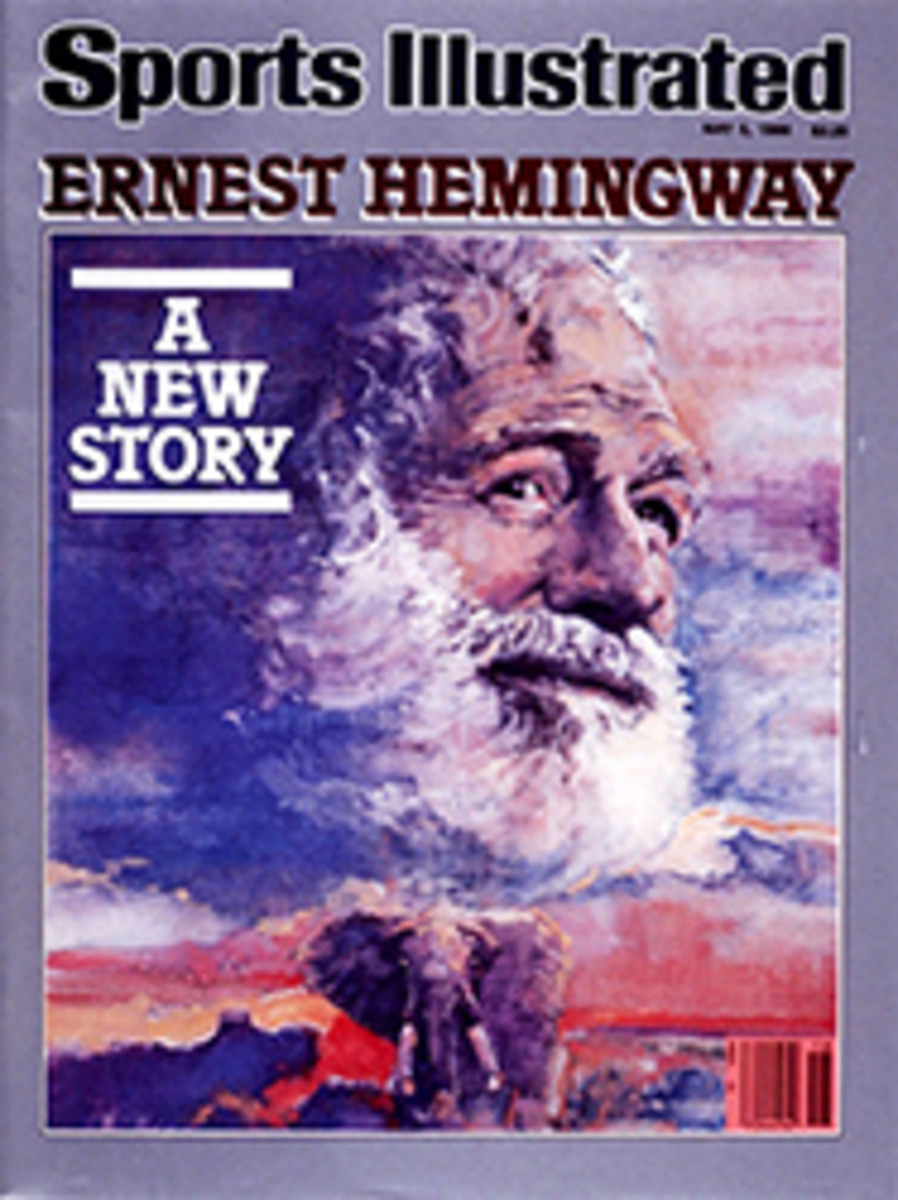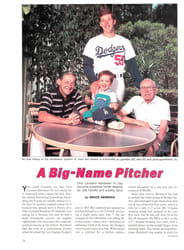
FOR ONE DEDICATED BIKER, THE SALE OF HIS TRIUMPH WAS A RITE OF PASSAGE
Riding a motorcycle, one capable of reaching 60 mph in six seconds or less, is an indelible and, in some cases, life-changing experience involving risk, intimacy and power. Until the early '60s, such machines came primarily from England. Harley-Davidson and other U.S. manufacturers built heavy—make that very heavy—road cruisers. Norton, BSA and Triumph: For 50 years these names held or set world standards in most kinds of competition. Then, in 1961, Honda appeared at the famous Isle of Man Tourist Trophy event in serious fashion. It brought prototype cycles and a team of excellent riders led by the late Mike Hailwood, who would finish the season as world champion.
These new machines featured chain-driven overhead camshafts, horizontally split crankcases, high rpms and wide, wide power bands. Hailwood won both divisions he entered, and Honda the first five places in each. The next year Honda returned in massive effort. The high-speed straights and narrow village switchbacks of the 37-mile Isle of Man circuit echoed with a sound that was soon to be heard round the world—a new generation of performance engines, forerunners of the Japanese machines that dominate motorcycling today.
I was a college student in the '60s. In a scheme to maintain beer funding, an entrepreneurial friend (a BSA owner) and I (then a Norton owner) opened a motorcycle repair business. Our shop was a drafty garage with a dirt floor and a kerosene heater like those used in duck blinds. We worked on whatever came through the door but preferred the British machines. Their eccentric, macho style matched our own. When literary-minded friends dropped by, we would entertain them with recitations from the English shop manuals—arcane nomenclatural tidbits like woodruff keys, gudgeon pins and swarf, and a particularly memorable oil-draining procedure that required cocoa tins.
But even a college student could see the writing on the wall: The British pushrod twins were doomed by the overheadcam Japanese bikes, which in five years had surpassed, or at least pulled abreast of, the best that England could offer. The Honda 305, for example, was a smallish machine with less than half the displacement of my Norton, but it could run all day at 70 mph and required only token maintenance.
The British factories tried to keep up—adding essentially cosmetic touches like electric starters, disc brakes and turn signals. But bad management and a refusal or inability to change basic engine design precluded any real recovery. In 1969 Honda struck again, this time with a production 750-cc four-cylinder that was fast and reliable. This new motorcycle continued pulling hard at 100 mph.
Today there are dozens of Japanese machines on the road whose acceleration (and braking) would be unbelievable, perhaps scary, to the average four-wheel motorist. And the English no longer make motorcycles for the open market. BSA closed its doors in 1973, Norton in 1976, and Triumph, following some feeble attempts at reorganization, sent its last machine to the U.S. in 1983.
After achieving college graduate status I tried some dirt track racing. It was the logical culmination of my four-year career as a student showoff with a hot machine. Alas, my performances were thoroughly average. In the straights my meticulously prepared BSA was slower than the then exotic Yamahas. And in the turns my taste for speed didn't extend to the ragged edge, which is where the winners ride. In 1970 I hung up (sold, in fact) my leathers and bought a car. (Beg your pardon? Oh, a Toyota.)
Ten years later I discovered a 1964 Triumph, and in less time than it takes to smile impulsively, I saw myself buy it. It had been sitting in a puddle of crankcase drippings for several years. The paint was horribly faded, and the once lovely chrome was rusted and pitted. Moths lived in the carburetor. I took it apart, rebuilt and repainted it (a case of cost overrun rivaling the MX missile) and, being a photographer, I rolled it ceremoniously in front of a sheet of white background paper and took a picture of it.
Just parked at the curb, the Triumph made a statement about economy of form and function that today's models can only parody. Its design is classic in the truest, simplest, least hackneyed sense. Even the name and logo are compelling. No color-coordinated saddlebags, windtunnel fairings or radio antenna. Just a lean, 360-pound package with 50 hp. No electric starter, either—this bike you kick over. And mind those 9:1 pistons and 38 degrees of timing advance, mate.
In handling and acceleration, the Triumph shares the heritage of all English motorcycles, which were developed to go fast on narrow, winding roads. Partly because of its wheelbase, partly because of the power characteristics of its pushrod engine and partly because of its frame geometry and weight distribution, the Triumph lays down comfortably for turns. It's nimble. From the stoplight, it moves ahead with a deep, satisfying, correct exhaust note.
After owning the Triumph for five years (and fewer than 3,000 miles—I was strictly a weekend and daylight driver), I put it up for sale. It was a curious decision. Maybe it was because of the imminent lack of leaded premium gas. Maybe because I had turned 40 and had a family. Maybe because a 21-year-old motorcycle, no matter how lovingly rebuilt, is increasingly vulnerable to the mechanical version of coronary arrest—blown piston, swallowed valve, failed bearing. The list gets longer every year. I told my incredulous friends that selling it just "felt right," even though the machine looked beautiful and ran perfectly. The soft-spoken new owner seemed sensitive and responsible ("Hey," he said, walking around it for the first time, "this is really a kept-up bike").
On the Sunday evening before I signed the pink slip, I put on a pair of red socks and walked quietly out to the garage. The gas tank was a bit dusty, so I found a towel and wiped it. The deep candy-apple red finish gleamed. As always, the engine started immediately. I let it warm up and then turned back the idle screw on the carburetor. The manual specifies a "smooth, even tick-over," but this is rarely possible. At 750 rpm one hears the syncopated, choppy song of a performance camshaft. Lifting the oil tank cap, I could see little jets of Castrol Grand Prix pulsing out of the return pipe. Before Japanese machines introduced oil pressure indicators, this was how one checked such things.
Like many houses in California, mine is not far from the freeway. The road leading to the entrance is almost exactly one mile long—a newly paved, tree-lined four-laner with a median strip and only one side road. It has two lovely curves, both with the correct camber. I took the second one at 70, shifting into third, and felt the right footpeg kiss the asphalt. I shot past a late-model Buick in the righthand lane. At the stop sign before the freeway I waited, listening to the chatter of the tappets and valves. The Buick pulled up alongside, its owner glancing at my windblown, thinning hair. I smiled.
The freeway on-ramp starts with a short tunnel. Tunnels are the recital halls of low-restriction mufflers. At full throttle, the exhaust shook the walls like an E. Power Biggs finale, NO HITCHHIKING and MERGING TRAFFIC appeared and vanished in an instant. The freeway was practically deserted. At 95, I shifted into top gear and lay forward on the tank, my left hand dropping to the top of the fork. The speedometer went to 100, then to 110, and quit somewhere near 120.
After about half a mile I sat up straight and downshifted for the first exit, stopping again at the bottom of the ramp to listen to the valve train. The Triumph seemed to be chuckling to itself.
My body was still vibrating, and because of the wind, my eyes were full of tears. I thought of the gray, iron loneliness at the end of my first marriage, then of the faces of my two beautiful stepsons. It seemed like a good time for a cigarette. Behind me, a car honked politely.
I headed home on the freeway, never exceeding 55. Changing gears, I could feel the springs holding the clutch discs together, and the funny little notched shifting plate that translates rotary movement of the footshift into lateral movement of gear pinions on grooved shafts. I saw the pistons going up and down 3,000 times a minute, their rings scraping against the cylinder barrels at incalculable speeds. I felt the bearings that cradle the crankshaft, each polished roller helping distribute the load.
The Triumph shone in the late sunlight like a transparent Plexiglas model, its every part visible and glistening with a film of oil, exulting in the miracle of its precision and the preposterousness of the whole internal-combustion engine. For 100 yards or so I rode with my eyes closed, and I could still see all of it.
ILLUSTRATION
Andy Whipple, a photographer and writer who lives in Berkeley, Calif., is cautiously confident he has kicked the motorcycle habit.

